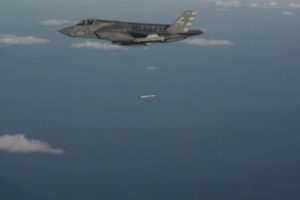
The Navy and Raytheon Technologies [RTX] conducted the first weapon drop of the StormBreaker bomb from an F-35B Joint Strike Fighter, the company said Monday. During this test based at Naval Air Station Patuxent River, Md., an F-35B from Air Test and Evaluation Squadron-23 (VX-23) used the bomb as a guided munition, just like they would use in combat from mission planning to weapon release. The company did not immediately disclose when the test occurred. After the aircraft released the…

 By
By 











